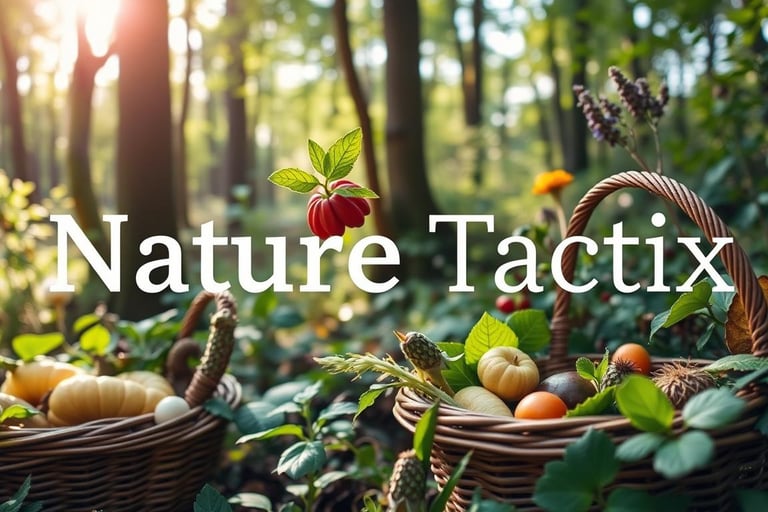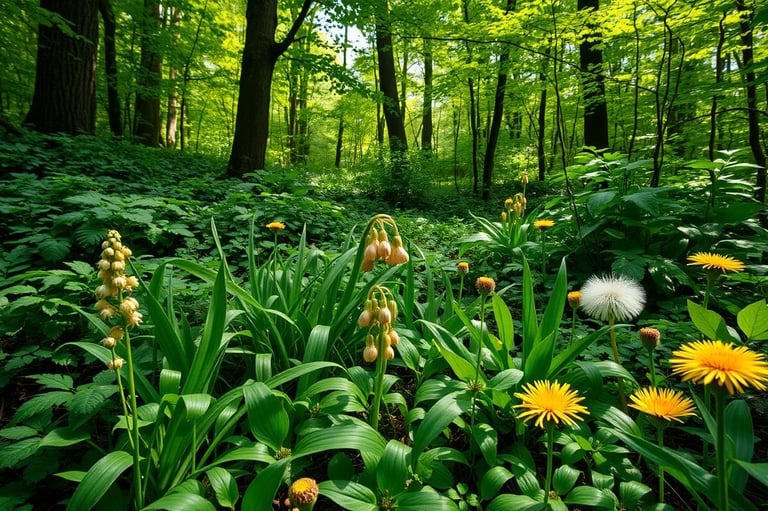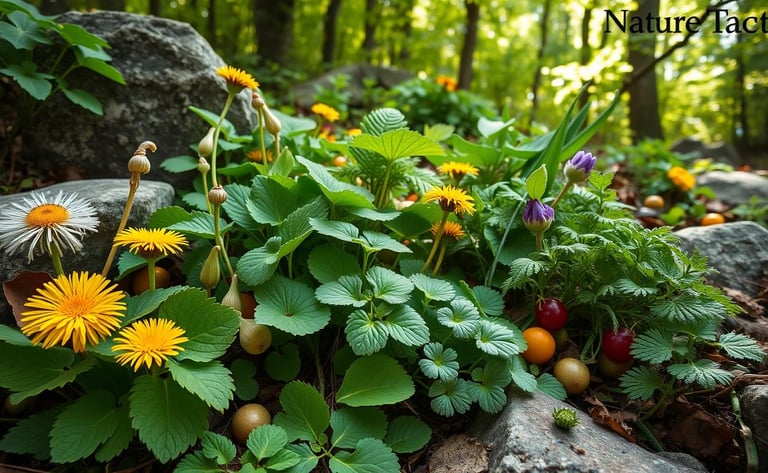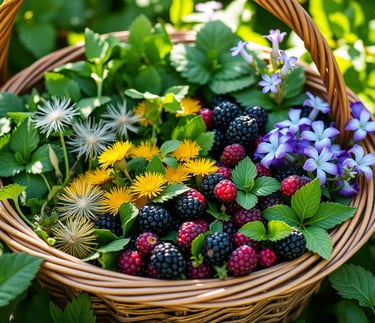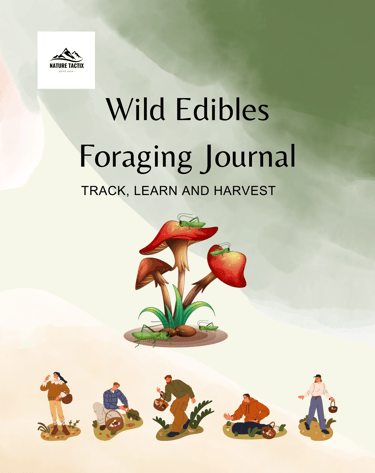Foraging for Food: Identifying Edible Plants
Discover the art of foraging for food: identifying edible plants and avoiding poisonous ones. Learn essential skills for safe wild food harvesting in Canada's diverse landscapes.
SURVIVAL POSTS
Kathrine-Anne Hill
10/27/20247 min read
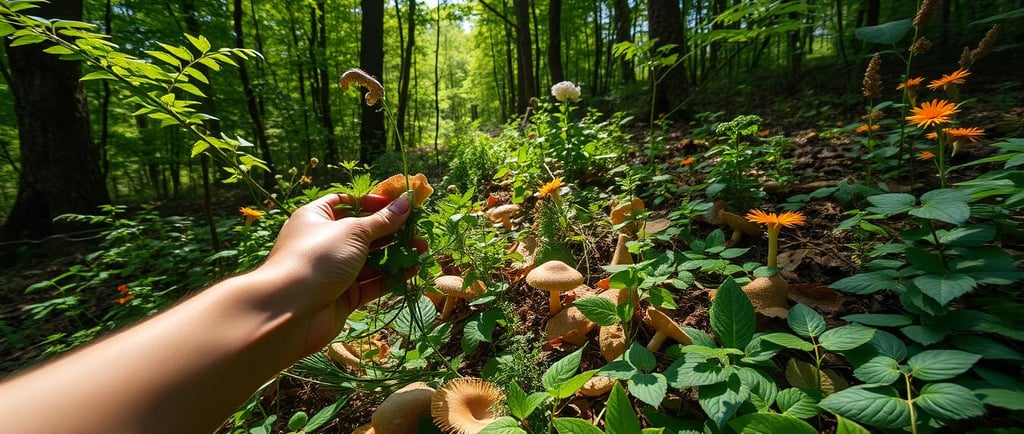

Affiliate Disclosure:
Please note that some of the links in this article are affiliate links. This means that if you click on these links and make a purchase, I may receive a small commission at no additional cost to you. This commission helps support the maintenance and growth of this website and allows me to continue providing valuable information and recommendations. Rest assured, I only recommend products and services that I have personally used or thoroughly researched. Your support is greatly appreciated! For full disclosure see our Privacy Policy and Terms and Conditions here.
Foraging for Food: Identifying Edible Plants
Have you ever thought about the treasures nature holds? They're waiting for you in your backyard or local park. Foraging for wild edibles is an exciting journey. It connects you to nature, giving you nutritious and delicious foods.
In this guide, I'll show you how to find edible plants. You'll learn to identify them safely and avoid poisonous ones. This is great for nature lovers, survivalists, or anyone wanting to eat more local food.
Key Takeaways
Discover the excitement and benefits of foraging for wild edibles
Learn essential skills for safely identifying edible plants and avoiding poisonous ones
Explore a selection of delicious and nutritious wild foods to forage in your local environment
Understand the importance of sustainable and ethical foraging practices
Gain the confidence to responsibly incorporate foraged finds into your everyday meals
Introduction to Foraging for Wild Edibles
Foraging for wild edibles is exciting and rewarding. It lets us explore the outdoors and find nourishing plants. But, we must do it safely and know what we're doing.
The Excitement of Discovering Nature's Bounty
Foraging connects us to nature. It lets us find and appreciate the plants around us. Finding edible plants is a special experience that feeds our body and soul.
Importance of Plant Identification and Safety
Foraging is thrilling, but we must know our plants. Some plants are dangerous or even deadly. Learning to identify safe plants is key to foraging safely.
We'll learn more about foraging in the next sections. We'll talk about how to do it safely and find tasty wild edibles near us.
Foraging Safety Guidelines
Foraging for wild edibles is exciting and rewarding. But, it needs caution and knowledge. When you go out to find nature's food, follow important safety rules to stay safe.
Never Assume Edibility Based on Animal Consumption
Just because animals eat a plant doesn't mean we can. Each creature's body is different. What's safe for a deer might not be for us. Always be careful and don't think a plant is safe just because animals eat it.
Avoiding Plants with Strong, Unpleasant Odors
Plants with bad smells might be toxic. These smells help protect the plant. Stay away from plants with strong, bad smells to avoid health risks.
Steering Clear of Possible Contamination Sources
Think about where you forage. Avoid places with pollution, pesticides, or other dangers. Places near roads, factories, or crowded areas are risky. Choose clean, untouched places to forage safely.
By following these safety tips, you can enjoy foraging safely. Always put your health first when exploring nature.
Identify Edible Plants with Confidence
Knowing which plants are safe to eat is key for any forager. Field guides and local experts help you learn. This way, you can find and use wild foods like nasturtiums, prickly pear cactus, and morel mushrooms.
Using Field Guides and Local Expertise
Field guides are super helpful for foragers. They have pictures and descriptions to help you identify plants. Also, talking to local experts is a great idea. They know a lot about the plants in your area.
Recognizing Common Edible Plants in Your Area
Nasturtium: Peppery, versatile flowers and leaves that can be used in salads, pestos, and more.
Prickly Pear Cactus: A desert delicacy with edible pads and fruit, packed with vitamins and minerals.
Morel Mushrooms: The elusive spring delicacy that adds earthy, nutty flavors to dishes.
Learning to identify plants lets you forage with confidence. You'll enjoy the tasty gifts of nature.
Foraging for Food: Identifying Edible Plants and Avoiding Poisonous Ones
Exploring the world of foraging for wild edibles is exciting. But, it's key to know how to identify plants before eating them. Mistaking a poisonous plant for an edible one is very dangerous.
To stay safe, get a good field guide or use a reliable app. "How to Forage for Wild Foods without Dying" by Ellen Zachos is great. It has clear info and pictures for 40 common wild plants in North America.
When you go out to find plants, be careful. Don't pick plants with bad smells. Also, don't eat plants just because animals do.
Learn about the edible plants in your area and their lookalikes. This way, you can forage safely and with confidence. Knowing the difference between safe and dangerous plants is key for a good foraging experience. 31 Edible Wild Plants Absolutely Anyone Can Find in North America is a great book that has detailed illustrations of each plant.
Delicious Wild Edibles to Forage
I love finding new wild edibles to cook with. Three favorites are the peppery nasturtium, the tasty prickly pear cactus, and the rare morel mushrooms. Foraging for these is a joy.
Nasturtium: A Peppery Garden Delight
Nasturtiums are tasty and colorful. They grow in gardens and parks. Their flowers, leaves, and seeds are great in salads and dips.
Prickly Pear Cactus: A Desert Treat
Prickly pear cactus is unique. It's found in dry places. The pads and fruits are edible and delicious.
Morel Mushrooms: The Elusive Spring Delicacy
Morel mushrooms are a big find. They have a special flavor and look. Spring is the best time to find them.
Foraging has changed how I see food and nature. It's taught me to appreciate what's around us.
Sustainable and Ethical Foraging Practices
Foraging for wild edibles is getting more popular. It's key to follow sustainable and ethical ways to do it. This helps us not harm the environment. It also keeps nature's balance and makes sure we can find these foods later.
Following the "Leave No Trace" rule is a big part of foraging right. It means we should leave the place as we found it. We should not hurt plants, throw away trash, and respect the area's natural state.
Only take what you need, and never more than a third of a plant. This lets it grow back.
Don't tell others where you find food. This keeps places from getting too crowded and damaged.
Look for food in clean, safe places. Stay away from busy roads and places with pollution.
It's also important to know the laws about foraging. In many places, you can't forage in public parks or on private land without permission. Knowing the laws helps us forage the right way.
By choosing to forage in a sustainable and ethical way, we can enjoy nature's gifts. This helps the environment and connects us more with nature and its food.
Poisonous Plants to Avoid at All Costs
Foraging for wild edibles is fun, but knowing the dangers is key. This section talks about three deadly plants to stay away from. These are the death cap mushroom, monkshood, and horse nettle.
Death Cap Mushroom: A Deadly Mistake
The death cap mushroom is very poisonous. Eating just a little can harm your liver and kidneys badly. It looks like edible mushrooms, making it very dangerous.
It has a pale green cap, white gills, and a bulbous stem. Knowing this can save your life.
Monkshood: The Queen of Poisons
Monkshood, or Aconitum, is very toxic. It's in the nightshade family. All parts of the plant are poisonous.
It can harm your nerves and heart. This can lead to breathing problems and death. Its blue or purple flowers and lobed leaves are a warning to stay away.
Horse Nettle: A Nightshade Family Danger
Horse nettle belongs to the nightshade family. It has yellow flowers and spiny leaves. It contains solanine, a toxic compound.
This can lead to stomach problems, brain issues, and even coma. Its spiny leaves and green berries are warning signs to stay away.
Processing and Cooking Foraged Foods
After picking your wild foods, it's time to cook them. The right cooking methods can enhance taste and safety. This way, you can enjoy your foraged foods without worry.
Preparing Wild Edibles for Maximum Enjoyment
First, clean and wash your foraged items well. This removes dirt and pests. For soft greens, just pat them dry. But for tough plants like nettles, blanching or sautéing helps.
Each wild food needs special care to taste its best. This makes your meal even more enjoyable.
The Deerholme Foraging Cookbook: Wild Ingredients and Recipes from the Pacific Northwest is a great recipe book for foraged foods.
Incorporating Foraged Finds into Everyday Meals
Now, add your wild foods to your meals. Mix wild greens into salads or sauté nettles as a side. You can also blend herbs into sauces. The choices are endless!
Try new things with your foraged foods. This way, you can make meals that are both tasty and healthy. It's a great way to enjoy nature's gifts.
Get my Free Wild Edibles Foraging Journal
A printable PDF designed to help foragers document and track your foraging experiences, Includes plant entry pages along with recipe pages, to record your favorite recipes using your foraged foods, and also has a checklist of essential gear for your foraging trips with practical tips. Download completely FREE from the Button below.
Related Posts:
Essential Skills Every Prepper Should Master
Essential Guide to Mushroom Foraging in Canadian Forests

